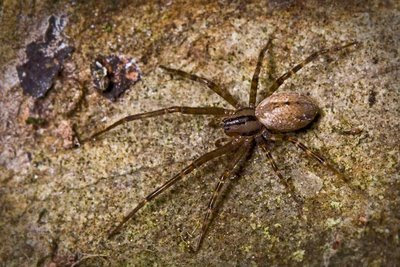 A pair of magpies [1] flashes across the edge of the paddock, the black and white a brilliant, swift streak of contrast, of non-colour, against the dull yellowish-greens, taupes, and greys of the overcast day. The birds arc around a pair of startled lambs, veer up towards the old apple, dive behind a manuka, and disappear below the terrace. A minute later one bird reappears, flying straight over the paddock; the other follows a few seconds later.
A pair of magpies [1] flashes across the edge of the paddock, the black and white a brilliant, swift streak of contrast, of non-colour, against the dull yellowish-greens, taupes, and greys of the overcast day. The birds arc around a pair of startled lambs, veer up towards the old apple, dive behind a manuka, and disappear below the terrace. A minute later one bird reappears, flying straight over the paddock; the other follows a few seconds later.Territorial dispute? Some kind of courtship behaviour — the male demonstrating his skill and strength at flying or the female testing it? I don't know, but the aerobatics seem no less spectacular for my ignorance. I suppose someone's studied magpie behaviour rigorously enough to say what's behind the display, but I'd rather not think about how many hours of observation must have gone into that kind of research. Watching birds — one of life's great delights — can be mind-numbingly tedious when the primary aim is to test an hypothesis.
The spectacular flight of those birds — fast, complex, apparently unpredictable — remains vivid in my memory as I think about the physics, the aerodynamics, the physiology. My personal knowledge of those matters is rudimentary but as a species we now  know enough to build machines that can fly faster and higher than any bird and carry loads many orders of magnitude heavier. What we can't do, and can't come anywhere near, is build a machine even remotely as agile as a magpie, or that tui weaving now through the still leafless branches of the Robinia, or the two riroriro I saw scrapping in and above the leatherwood on Knights Track. When it comes to flight, the examples of our inadequacy are innumerable.
know enough to build machines that can fly faster and higher than any bird and carry loads many orders of magnitude heavier. What we can't do, and can't come anywhere near, is build a machine even remotely as agile as a magpie, or that tui weaving now through the still leafless branches of the Robinia, or the two riroriro I saw scrapping in and above the leatherwood on Knights Track. When it comes to flight, the examples of our inadequacy are innumerable.
Perhaps one day we might be able to make something with those capabilities. But whatever the materials it will be made of, it will still be essentially an inert lump of those materials, waiting for some human to provide instructions. What it will not be is alive; what a bird has that this constructed device will not, is life.
One magpie returns, flying low over the paddock then suddenly swooping upwards to the power lines. It slows, hangs momentarily in the air and grasps the line with its feet. As it folds its wings it breaks into that joyful, ebullient, warbling song. Whatever one thinks of magpies — and that's often not an appreciative thought because of their belligerence, their propensity for attacking other birds [2] and humans (I have direct personal experience of that from just last week as I pedalled home) — one can't help admiring them. The ratbags are so magnificently alive.
Notes:
1. Australian magpie, Gymnorhina tibicen. The other birds specifically mentioned (in paragraph 3) are the tui (Prosthemadera novaeseelandiae) and riroriro (grey warbler, Gerygone igata).
2. Despite popular folklore, magpies are not likely to have important effects on native birds except perhaps in a few limited situations. The folklore probably arises because magpies' interactions with other species tend to be highly conspicuous. While magpies do sometimes kill other birds, the attacks seldom result in anything more than displacing the other bird about 50–100 metres.
Innes J, Spurr E, Morgan D 2004. Magpies are not serious pests. Kararehe kino: Vertebrate pest research. Issue 4 (June 2004): 6–7. ISSN 1175–9844. Retrieved 29 September 2008 from http://www.landcareresearch.co.nz/publications/newsletters/possnews/KarareheKino4.pdf
Morgan D, Waas JR, Innes J 2006 The relative importance of Australian magpies as nest predators of rural birds in New Zealand. New Zealand journal of zoology 33: 17–29. Retrieved 29 September 2008 from http://www.royalsociety.org.nz/includes/download.aspx?ID=95100 (pdf, 440 Kb).
Photos:
The only good photos I have of magpies I've already posted. So, you get a tui and some play, which given the way magpies play, might not be entirely inappropriate.
1. Not a bird. An experiment with light.
2. Tui on flowering harakeke, Pohangina valley, December 2005 (click to enlarge it).
3. Another experiment with light.
Photos and words © 2008 Pete McGregor






